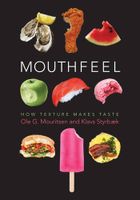Advertisement
Particles in Food
Appears in
By Ole Mouritsen and Klavs Styrbæk
Published 2017
The mouthfeel of a food is very much influenced by particles that are distributed more or less evenly throughout it. It is possible for the mouth to detect particles as small as 7–10 micrometers. If the particles are bigger than that, the mouthfeel will be perceived as sandy or mealy, an example being small ice crystals in ice cream. The particles can also be so big that they are visible to the naked eye—bits of meat in a meat sauce, tapioca grains in a pudding, or julienned vegetables. The mouthfeel of the particles will depend on their size, shape, and hardness. Particles in the form of liquid droplets or fats in a solid, but still plastic, phase will feel creamy, and ice crystals as hard and gritty, even crunchy.

